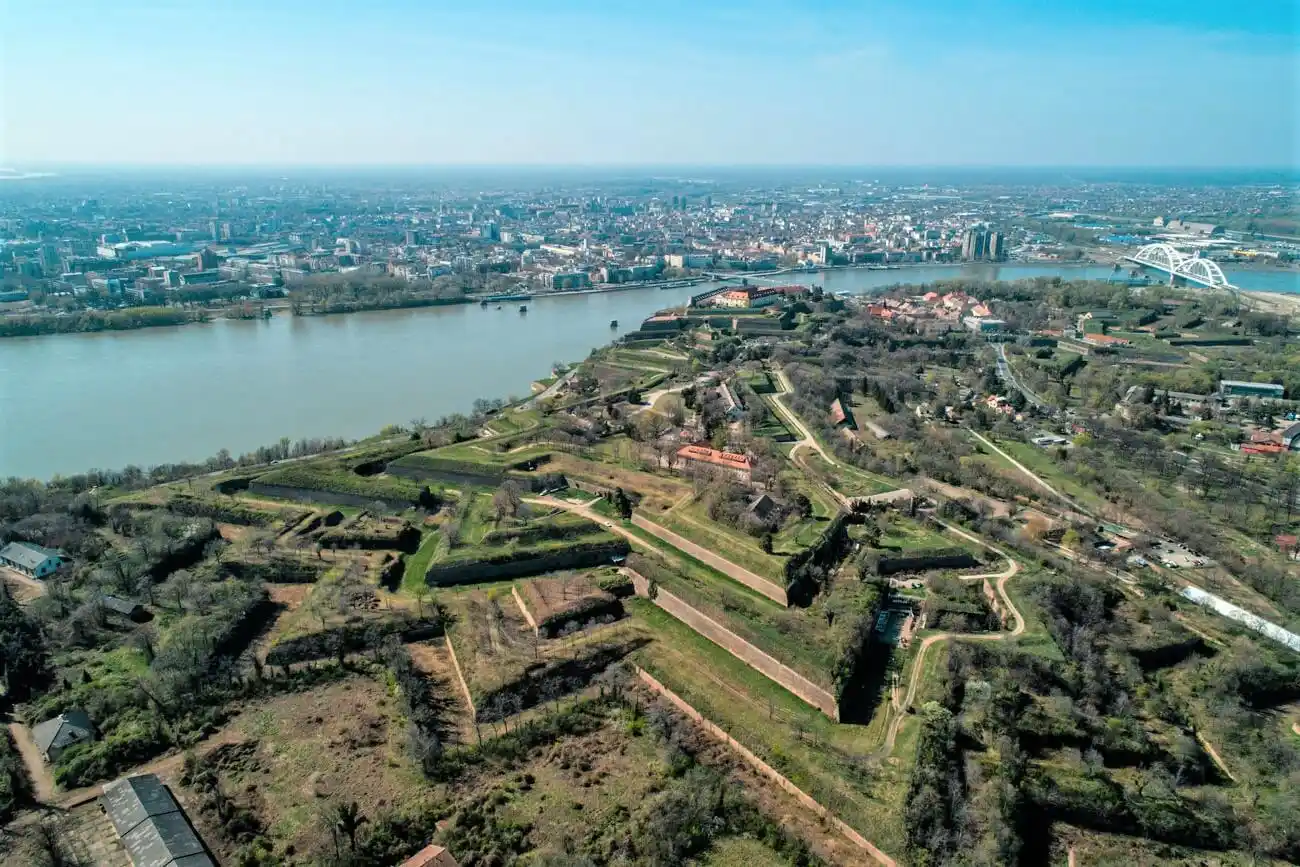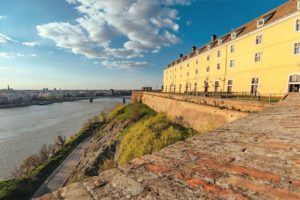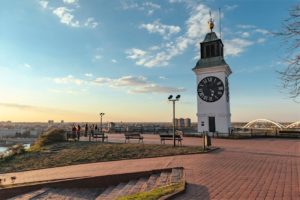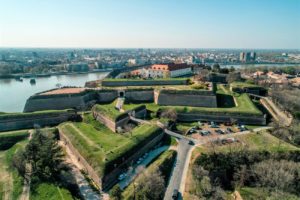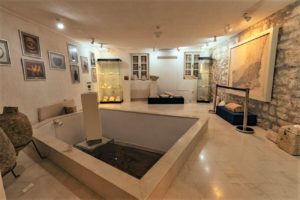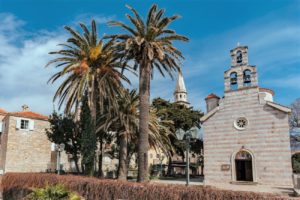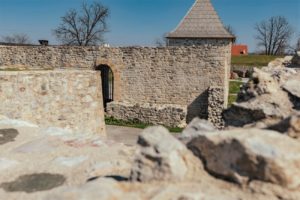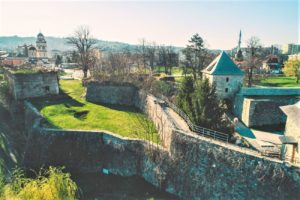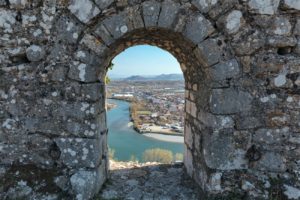Snake living in a river, three brothers making a sacrifice to build their castle or Greek refugees settling and building a new city… All of these are some of the Balkan legends, that are coming to life with Creative History Balkans Tour. If a combination of the old fortresses, history and local legends sounds like your cup of tea, then keep on reading because this could be an excellent idea for your next Balkan road trip.
Exploring the Balkans
Recently, I’ve decided to explore more of Eastern Europe and lesser known places there. With its turbulent history, the connection between Eastern and Western culture and some of the most beautiful nature in Europe, the region of Balkans became so interesting to me.
Balkan countries are becoming more and more intriguing to travellers lately. But, I have a feeling there are still so many undiscovered places there. Last month I went on a road trip to Croatia and Bosnia. And already there that beautiful mix of East and West was clearly visible. I’m also planning to explore more of the inland of Croatia and the region of Slavonia and to spend a few days in Serbia during the summer.
Having turbulent history and often devastating wars, the region of Balkans wasn’t only the place where you can experience that historical conflict. But, it’s also the place where you can see different cultures merging together or co-existing side by side. That mix of cultures and influences is probably one of my favourite things when it comes to Balkans.
Creative History Balkans Tour
With so many things and places to see on Balkans, it could be hard to choose the best place to visit. However, there are some wonderful cultural projects organised, that could make your choice easier. One of them is Creative History Balkans Tour.
It’s a project funded by the European Union, which is connecting four different Balkan countries, by exploring their cultural heritage. They have created a cultural path filled with a fascinating history and local legends, between the four fortresses located in Bosnia, Serbia, Montenegro and Albania.
*TIP: As someone who likes taking road trips, I can hardly imagine a road trip better than this. Following the Balkan legends and visiting some of its most amazing fortresses along the way, could be such a great Balkans road trip idea.
Balkan Legends and Fortresses
When I started researching those four fortresses, I was amazed by how, although quite different in their appearance, they have so much in common. All of them changed many rulers and were slowly rebuilt during the centuries. It’s also so exciting to hear numerous legends that have been told about them.
However, something I liked the most is that all of them are still alive. There are museums, cultural institutions and even some of the most famous European music festivals (Exit Festival in Novi Sad, for example) organised in them.
#1 – Petrovaradin Fortress, Novi Sad – Serbia
The legend says there is a secret tunnel connecting the Petrovaradin Fortress and the city of Novi Sad located on the other side of the Danube River. However, it still hasn’t been found after all those years. Perhaps, the reason is in a dragon or a giant snake that, according to another legend, lives below the castle… It became so famous among the locals that it got a nickname ‘Peti’ after its notorious relative ‘Nessie’ from Scotland.
Although the first fortress was built on the Petrovaradin hill some 4 or 5 thousand years ago, today’s structure dates from the 18th century. Since it was a part of the Habsburg Monarchy back then, many Austrian architects and engineers worked on it during the 88 years long construction. However, when it was finished, it was called the ‘Gibraltar on the Danube’ and considered the strongest fort in the Monarchy.
Petrovaradin Fortress is home to some cultural institutions and museums today. But, it’s definitely the most famous as a location of the Exit Festival.
#2 – Citadela Fortress, Budva – Montenegro
Founded by the Greek mythological couple, Cadmus and Harmonia, Budva was one of the cradles of European culture. Because of that link with an ancient Greece, there was a strong Hellenistic culture present in Budva at the beginning of the city. And many legends related to Greek mythology could still be found in that area.
Famous for its beautiful Adriatic coast and a transparent blue sea, the city of Budva is also home to the Citadela Fortress. It was demolished and rebuilt a few times throughout history. And today’s layout was designed in the 19th century, again during the Austrian rule. Budva is a real symbol of those connections of West and East, being at a border of Byzantium, Venice, Austria or Serbia throughout history.
Today, there is a small exhibition space, a library and some other facilities located inside the old city walls.
#3 – Kastel Fortress, Banja Luka – Bosnia and Herzegovina
One of the most famous legends in the Bosnian town of Banja Luka is related to its Kastel Fortress. It’s about a young girl named Safikada. She has fallen in love with a soldier stationed in the fortress. However, since she was from a noble family and her parents were about to choose her future husband, their love wasn’t possible. So, they had to keep it a secret. After Safikada heard that he has died in a battle, her heart was broken. She decided to take her own life and, according to some versions of the legend, ended it at the Kastel Fortress.
Kastel Fortress is the oldest monument of Banja Luka, located at the centre of the city. The earliest findings there are dating from the Prehistory. Since people were continuously living there until nowadays, Banja Luka is considered to be one of the oldest cities in Europe. Parts of the fortress were built during the Roman times, so the Roman walls could still be seen there. It was rebuilt during the Ottoman rule, and present shape is mostly dating from the 18th century.
After being bombed during the Second World War and damaged in the earthquakes in 1969 and 1981, it was restored a few years ago. The fortress is today home to a few music festivals and some cultural events.
#4 – Rozafa Fortress, Shkoder – Albania
Probably the most striking legend is related to the founding of the Rozafa Fortress in Albania. It’s telling the story of the three brothers who struggled with building their castle. What they would create during the day would collapse during the night. So, they were given advice that they should make a human sacrifice to continue the construction successfully. They’ve decided they will sacrifice first of their wives that will come to bring them lunch. It was the youngest brother’s wife, named Rozafa, who came first and was then walled into the fortress.
Rozafa Fortress is located at the hill above the town of Shkoder, overlooking the three rivers, Kir, Drin and Buna. It had an excellent strategic position for centuries. Because of that, today it has one of the most beautiful panoramic views on Shkoder. Once again that mix of West and East, and many different rulers is still visible in its architecture. From Illyrian times, Balshas, Venetian rule, Turkish occupation until the Bushatlis feudal family.
There is a museum located in the fortress today, and many different cultural events are organised there. I especially liked the fact that some photography contests are held there too, giving the fact that fort has such a fantastic panoramic view.
Being at a border between East and West for centuries, Balkan countries have such an amazing mix of cultures and influences. Following the path of their legends and discovering some of their past and impressive fortresses could be an excellent idea for the Balkans road trip.
*Disclaimer: This blog post was sponsored by Creative History Balkans Tour. You can learn more about that amazing project on their website, Facebook page and YouTube channel (they have some beautiful videos of those fortresses there). Photos in this post are subject to copyright by the creative History Balkans Tour project.


